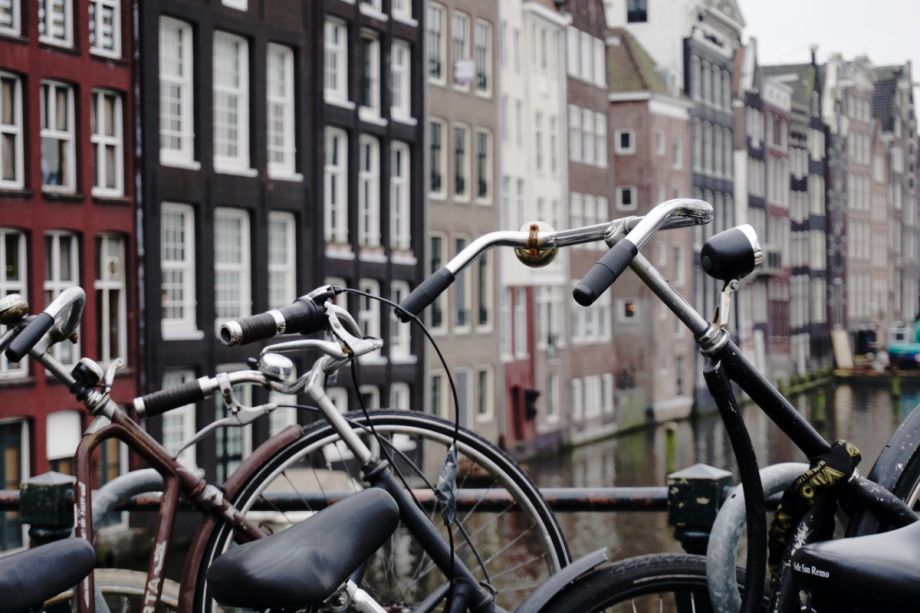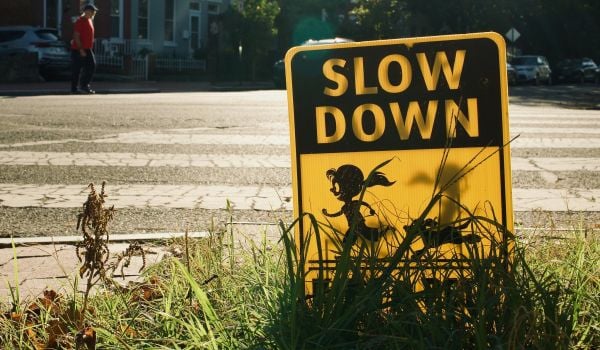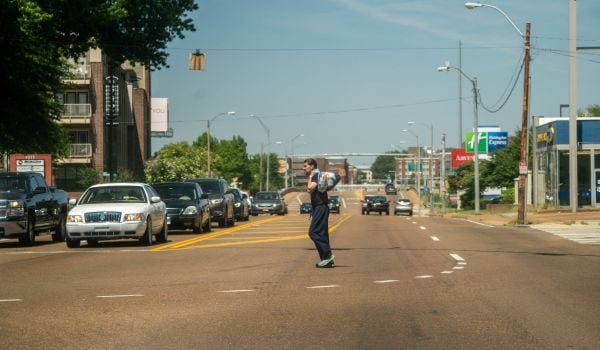In the United States, each new piece of quality, dedicated bicycle infrastructure is a victory for advocates and planners working to carve out safe, efficient space in which bicyclists can travel. In Amsterdam, where bicycle infrastructure has been a centerpiece of planning for decades, traffic engineers have been experimenting with removing infrastructure in service of that same goal.
The Netherlands’ capital isn’t about to do away with its nearly 500 miles of bike paths and lanes, but it is, in certain cases, experimenting with taking out protective barriers and other traffic controls to improve flow and speed for its hundreds of thousands of daily bicyclists.
In Alexanderplein, a busy intersection near the city center, engineers went so far as to remove traffic lights for all transportation modes. The pilot project was successful enough that it led to permanent removal of the lights and plans for similar treatment at other busy intersections.
The Alexanderplein pilot grew out of the city’s 2012-2016 mobility plan. With nearly 70 percent of trips in the center city being taken by bicycle, bike traffic was getting jammed up at intersections. The city identified spot changes that would improve bicycle traffic flow on the busiest bicycle routes where up to 40,000 bicyclists rode each day. According to Meredith Glaser, a researcher at the University of Amsterdam’s Urban Cycling Institute, the Alexanderplein intersection was seeing upward of 6,000 bicyclists an hour at peak times. It also has cars, streetcars and pedestrian crossings.
“In the end, traffic light infrastructure is an infrastructure for cars, not an infrastructure for people on bikes and people walking,” says Glaser. “In locations with high levels of people on bikes and people walking, traffic lights maybe aren’t appropriate.”
Because so many bicyclists were passing through the intersection, red lights would lead to big backups of bicycle traffic and long delays. City traffic engineers postulated that eliminating traffic lights would actually speed things up for everyone. After eight months of planning and negotiations among city officials, the transportation department, the transit agency, cycling advocates and accessibility advocates, the city was ready to flip the switch. In May 2016, they shut off the traffic lights.
Researchers from the Urban Cycling Institute were brought in before the change to do qualitative study of the pilot project. They asked 200 bicyclists their feelings on Alexanderplein. A majority of respondents said the intersection was “chaotic” or “messy.” About 80 percent of them responded that the traffic lights were necessary.
The researchers returned during the pilot and interviewed another 150 bicyclists. About 60 percent of them said the intersection worked better without traffic lights. The city’s technical study found similar positive results. According to Glaser, the lack of traffic signals did not cause an increase in crashes and did not delay the tram, and cut traffic delays in half.
The late Dutch traffic engineer Hans Monderman would not have been surprised by the outcome. Monderman’s philosophy was that the safest roads were those with the least amount of lights, signs and road markings dictating where and when cars, bicycles and people should travel. His theory was that the unpredictability of a shared space would require the utmost attention from all road users, whereas lanes and signals allow people to zone out to some extent.
Researchers of the pilot observed that a bit. “We noticed that people generally became more aware of their social and spatial interactions,” Glaser says. “Bicycle to bicycle or bicycle to car, whether gesturing or expressions or by voice. Though they were not necessarily positive interactions in all cases.”
Based on the early success, the city extended the pilot project for an indefinite period. In September 2016, they removed the traffic lights completely.
In the intervening year, the city has done similar spot treatments and has plans for others to create more space for bicyclists or improve traffic flow and safety. The city also removed traffic lights from the central square, Muntplein. Elsewhere, Glaser says, they’ve experimented with removing protective barriers on some bike lanes to give bicyclists more space, and reduced speed limits to 18 mph (30 kph).
“I don’t think the Dutch are going to give up traffic light infrastructure. It certainly has its role on very busy, high-volume streets. But I think where Amsterdam is heading is to think strategically about those places where traffic lights are actually hindering movement,” Glaser says.
It’s a bit hard to imagine the Alexanderplein model becoming a standard tool for planners around the world. After all, there are few cities anywhere that have the volume of bicyclists that central Amsterdam does or the sort of driver awareness of bicyclists that’s come from 40 or 50 years of Dutch bicycling culture. Certainly there are no U.S. cities with that volume or level or driver respect for other road users.
And yet Seattle City Traffic Engineer Dongho Chang thinks there’s a place for that kind of planning in the U.S.
“In an urban environment with lots of people and activity, you don’t want a driver to be zoning out,” Chang says. “You need them paying attention and looking for the unexpected. Overall, it’s a good paradigm to have everyone really pay attention as well.”
He points out that only about 8 percent of intersections in Seattle are signalized, but they account for 51 percent of collisions that have occurred in intersections in the past 13 years. Part of that is because signalized intersections have higher traffic volumes and more complex configurations. But Chang agrees that some of it is that signals allow people to zone out more. Signals also lead to behaviors such as speeding through a yellow or accelerating quickly from a green.
Seattle hasn’t removed the traffic signals from a signalized intersection yet, nor do they have plans to Chang says. But the city has experimented with going from signals to four-way stop at an intersection near the University of Washington. The bicycle traffic volume increased on the route because of a new protected bike lane. Prior to the change the intersection saw three collisions in a three-year period. Since making the switch to stop signs in 2014, there have been zero collisions.

Josh Cohen is Crosscut’s city reporter covering Seattle government, politics and the issues that shape life in the city.
Follow Josh .(JavaScript must be enabled to view this email address)






_600_350_80_s_c1.jpg)









